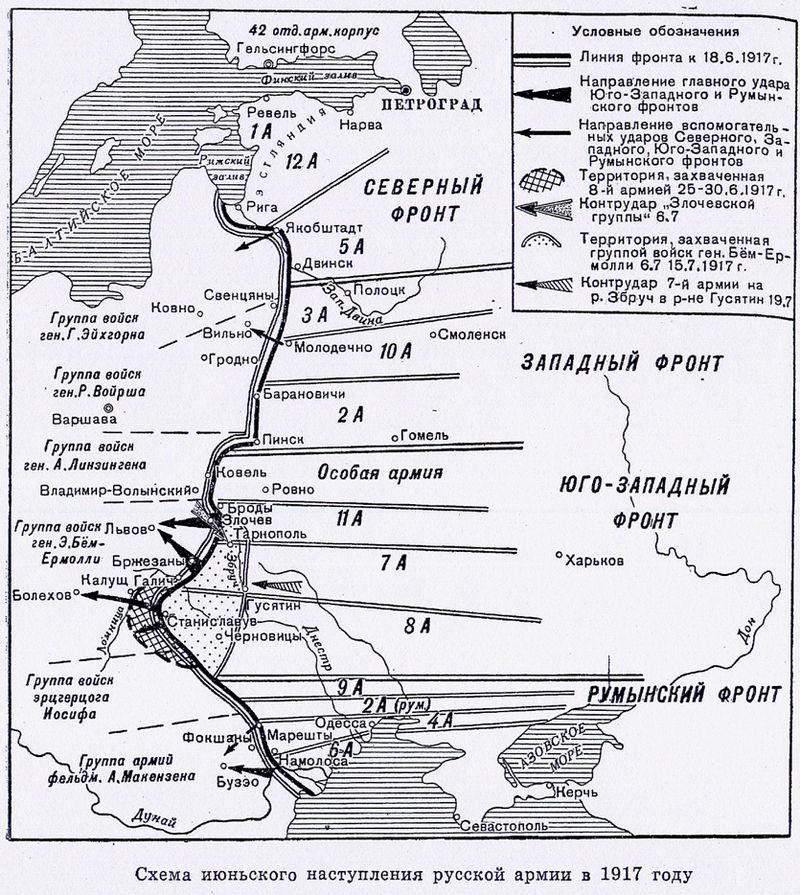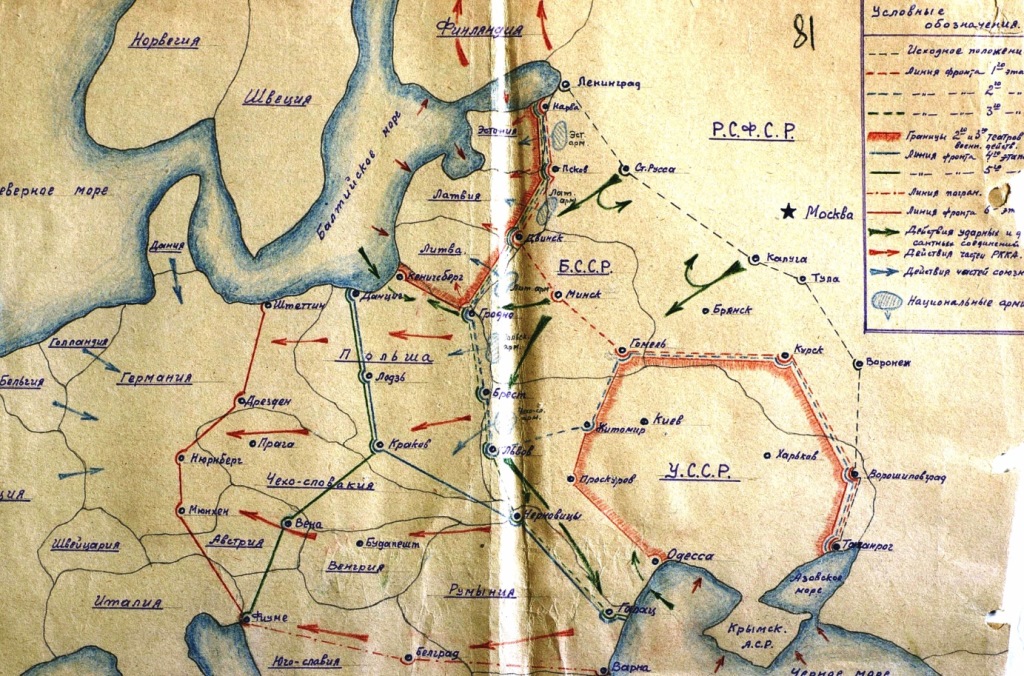Source: http://worldoftanks.ru/ru/news/pc-browser/12/dreams_of_steel_armada/
Hello everyone,
an interesting article about the background of the armor development by Yuri Bakhurin was published on the Russian portal. Here’s a translation of it (some parts are not literally translated to keep the meaning better). Enjoy.
The tank development is closely tied to the tactics and strategy of the use of armored forces. Unfortunately, few documents describing the use of these forces survived in the archives and each of them is a precious witness of the past. The following documents are the examples from the WW1 and WW2 era both. They show us, how naive (and sometimes even absurd) some of the ideas of that time were, but at the same time, one has to admire the authors for them caring about the fate of their homeland.
Land Squadron Kangro
In July 1917, E.V.Kangro, resident of Petrograd developed a project of a self-propelled artillery battery and presented it to the appropriate committee. His letter did not have any drawings or even sketches of the said battery, so we can only guess how his proposal was to actually look like, but the interesting part about the letter was the tactical use of these vehicles, proposed by the author.
The author stated that his planned SPG’s will be able to move offroad, traversing slopes up to 35 degrees, swimming over bodies of water and overcoming the obstacles in their way. In Kangro’s dreams, a horde of these vehicles was storming the northern front of 1917 along its entire length from Russia all the way to France.
Kangro was not worried about the border fortifications, he was more interested in the infrastructure and the industrial potential of the enemy in the offensive area. The army of SPG’s was not to destroy the enemy forces, but his means of transportation (roadways), which will prevent the enemy armies from redeploying and deny them materials (food, ammunition) at the same time. Kangro was right in his opinion that the lack of supplies does lead to losing the war. Apart from that, advancing throught northern Germany, the artillery army would destroy the German gunproducing and shipbuilding industry as well as docks, shipyards and airbases. Kangro proposed an armored offensive along the entire German coastline. He even took the airforce into command – the SPG’s were to be accompanied by a squadron of airplanes along with mobile repair facilities. Kangro was not even bothered by one of the worst horrors of the Great War – chemical weapons, as, in his opinion, the fact that the vehicles have closed compartments is enough to protect them from it.
It was all just wishful thinking of course. But considering that Kangro had no military education, in some details he surpassed even one the fathers of the armored forces, Jean-Baptiste Etienne and German master of self-promotion, Heinz Guderian. However, the events of 1917 crossed Kangro’s plans. The Russian army, paralyzed by revolutionary chaos, started a major offensive with the forces it had at its disposal and the offensive failed. The real successes of armor deployment on the western front came a year later, but that hardly impressed Kangro – after all, his own plan was much more large-scale than the one of the British.
Geometry of Victory
There are strategic plans in WW2 Soviet archives as well. One such project reached the People’s Commissariat of Defense (NKO) in the grim days of August 1942. The authors, politruk (political officer) E.V.Korobka and 2ndLt. S.T.Buryugov had no smaller goal than a neverending offensive of Soviet forces and total destruction of the enemy. But how to achieve that? The answer was simple: “The most effective use of combat vehicles on small scale is achieved by a system of star-shaped offensive.”
Even the ancient Romans said that a good start is a half of the success. According to this plan, the success was in series of smaller breakthroughs of Soviet groups through a number of areas of the front. After the breakthroughs, the Soviet armored forces would continue to pursue the enemy, while second line of troops (reserves) would be moved towards the front. A key moment of the entire operation was to follow: clusters of three groups would each deploy either to the left, or to the right and attack the enemy in a flanking maneuver. This would put the enemy in a crossfire between the advancing reserves and the flanking groups, forcing the Hitlerites not to escape from the front, but along its lines. In the end, the reserves would attack as well. This concept was to be christened by victory, but unfortunately, no reply from Soviet military was found in the archives.
Rushing the Enemy
In World of Tanks, the term “rush” (in Russian “rash”, pronounced the same) is used freely even on Russian server with the same meaning as on the EU one, but in the times of WW2, the English word was not known yet, but it’s hard to find a better word to characterize one of the plans to destroy the hitlerite Germany, that was assembled during the war.
The plan arrived around the same time as the “geometry” plan above. Its author was some man by the name of A.Kargopolov from Stalingrad. He proposed the Soviet HQ to deploy a brand new strategy of armored forces use, calling it “irrational”. The proposed strategy is based on a single thought: “move forward, ever forward and only forward, no matter what lies ahead”. Kargopolov proposed to concentrate as many tanks as possible on a single part of the front and to use them during one day to punch through the front and to break into German territory, because, as he imagined it, “in such a case, Berlin would be directly threatened within 6-7 days”.
In his letter, Kargopolov also added proclamations, such as “No looking back to the rear! Such forces do not have a rear. Only forward and forward”. Apart from that, he also proposed to organize the same breakthrough by the Anglo-American forces in the west. Apparently, he proposed the western armored forces to be transported straight to Germany by air. He then finished the letter by stating: “I will be happy if my letter helps our command in any way. I believe that my letter contains nothing unrealistic or fictional.” He sent the letter in three copies, but the reply of the army is not known either – two weeks after that, the war came to Kargopolov’s doorstep with Luftwaffe bombing Stalingrad to pieces. Kargopolov’s final fate is unknown.




lol 6-7 days. I would like to see the math on that. However he had a point, the current Soviet strategy was to attack everywhere at once and it was not working. Like millions dead not working.
Hi !
A. Kargopolov, unknown father of the world wide famous Lemmings’ Rush (or Rash…) ???
;-)
More like Lenin Rush lol
They should have send their tomatoes ahead in a lemming train supported by their unicoms in the second line.
2nd picture looks like a Xmas tree
Despite all the fuss about them, chemical weapons were hardly worth it during WWI. The amount of casualties caused by gas, compared to shelling, or even machingun fire, is negligible.
French and British tank crews had gas masks available, and that was deemed enough for their protection.
As for the first mecanized offensives, AFAIK, the French were much more effective than the Brits. Mostly because the later’ Mark tanks were slow and cumbersome, no matter how hard the British tried to improve them.